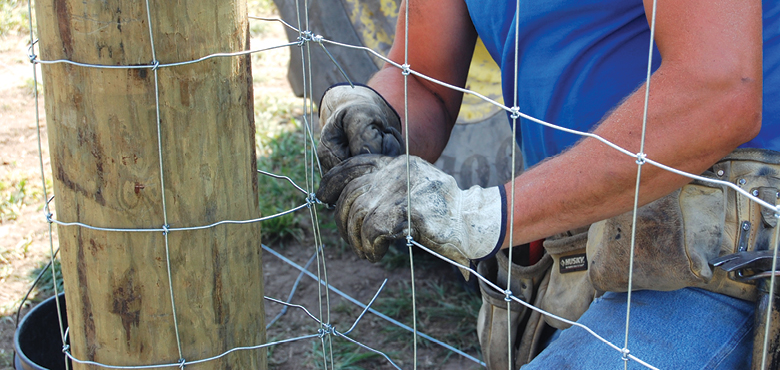Anyone who works on a farm (or cattle ranch, or horse training facility, or anywhere else that holds livestock), knows that the work is never truly done. There’s always something that needs fixing, an animal that needs care – or, in the case of a horse barreling through your wire fencing, both at the same time!
If you find yourself facing a damaged wire fence, don’t worry; fixing this little beauty is easier than you might think! All you need is the right equipment, the right know-how, and a can-do attitude. Here’s everything you need to know about repairing your woven wire fence.
Tools You’ll Need
If you’re going to get your fence back in working order, you will need some wire fence repair tools. These can include:
- Fence stretcher: a tool used to apply tension to wire fences, which keep the fence taut and allow you to make repairs
- Fencing sleeves: also called crimp sleeves, a tool used to connect two pieces of wire fencing
- Pliers
- Gloves and any other protective equipment
While these four items are essential to repair your fence, it is important to remember that fixing the wire fencing might require extra equipment. For example, if large sections of wire or fence staples have gone missing or become damaged, you’ll need extras to replace them. Additionally, if your fencing is electric, you will want to have a fence tester to make sure everything is working once again.
Steps for Fixing Wire Fencing
Once you have all your tools handy, it’s time to head out to your fence and start working. It’s important to begin repairs as soon as possible – after all, your fence is necessary for keeping your animals in and keeping pests and predators out. But luckily, this sense of urgency doesn’t have to come with a long day’s work, because you can repair a fence in four simple steps:
Clear Your Work Area
When you locate the area where your fence is broken, take a minute to assess the damage and clear away space to work. This is especially important if you have an electric fence, as live wires touching plants or wooden planks could be dangerous. Give yourself space to work, keep your tools where you can reach them, and get ready to start fixing!
Start Stretching
Locate the broken portion of your wire fence and grab onto each of the split parts of wire. It’s likely that these two pieces won’t be able to touch; when the fence broke, it lost enough tension that the wires are no longer tight enough to meet. To fix this problem, use your fence stretcher to pull the two sides taut once again.
Add a Fencing Sleeve
At this point, your fence stretcher should be holding the two wires close enough together that you can apply a sleeve to reconnect them. To do this, first remove any barbs for about six inches on either piece of wire. Then, slide the two wire pieces through the crimping sleeve. Use some heavy-duty pliers to clamp your sleeve into place and presto – you have a whole fence once again!
Separate and Wrap Your Wires
To make your repaired fence even more secure, separate the strands that hang out from either side of the sleeve. Wrap these strands around the barbed wire to further secure them to the fence and keep them from harming any animals (or children) who walk by. With this final step, your fence is officially fixed and ready to guard your property again.
Replacing Sections of a Wire Fence
Sometimes, the damage to your fence isn’t limited to one piece of wire. In these cases, you may need to replace entire sections of your fencing. The repair process here is very similar, but you need to add more sleeves along each section of the fence. Your fence stretcher will do A LOT of the heavy lifting here, so make sure your stretcher is in good working order and keep it tight throughout the process.
How to Prevent Fencing Issues
The best way to have a functional, unbroken fence is to prevent damage whenever possible. Sometimes damage is inevitable, but we have a few suggestions to help you keep your fence intact:
- Avoid temptation. Make sure your horses don’t see greener pastures (literally or figuratively) outside the fence line. This will prevent the animals from making a break for it in search of something nice to graze.
- Use electric fencing carefully. If you discover trouble spots in your fencing (areas where damage is frequent), you might benefit from re-fencing that area with electric wire. This can “shock” your animals out of approaching that spot, and they might end up avoiding the fence entirely.
- Walk your fence regularly. The best way to prevent fencing issues is to catch them before they happen. If you’re regularly checking your fence for weak spots, damage from predators or weather, fallen staples, or other potential problems, you can intervene before your fence becomes too badly damaged.
And, of course, one of the best ways to prevent fencing issues is to invest in quality fencing materials. That’s where Red Brand comes in: our company has 130 years of experience in the world of livestock fencing, and our American-made products are sure to keep your animals safely inside their paddock.
Contact our team today to find the ideal wire fencing for your property.

